Chainsaw Log Peeler Review
- January 24, 2024
- 2 comment
When it comes to woodworking or building a log cabin, having the right tools can completely change your experience. The Bozeman Chainsaw Log Peeler promises to streamline workflows, save time, and improve the quality of log prep, making it a powerful addition for anyone handling wood, whether you’re making furniture or just preparing firewood. With this chainsaw debarking attachment’s reputation in the industry, I had to put it to the test. Here’s my hands-on review.
Specifications
- Package Dimensions: 10 x 6.7 x 4.2 inches
- Weight: 4.1 lbs
- Item Name: Log Peeler Chainsaw Attachment
- Handle Type: Powder coated
- Material: Cast iron handle, carbide-tipped blade
- For use with: Chainsaws
- Size (inches): 3-1/4
Durable Build and Design of the Bozeman Chainsaw Log Peeler
Out of the box, the Bozeman Chainsaw Debarking Tool feels solid and well-built. It’s crafted from cast iron with a powder-coated handle, which gives it durability and a secure grip. I liked that the powder-coating doesn’t just look good—it also helps the handle stay slip-resistant, even when my gloves are on. The 4.1 lb weight is manageable, and while it adds a bit of heft to the chainsaw, it’s far from cumbersome.
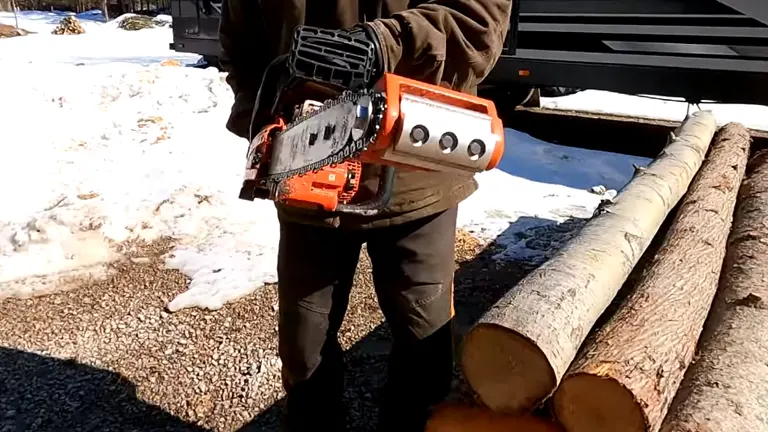
Its universal sprocket system is another standout feature, allowing it to fit multiple chain pitches. I could easily attach it to both my regular chainsaw and a backup model without any issues. Attaching this log peeler attachment for chainsaws took less than ten minutes, and I didn’t need any specialty tools—just my usual Allen wrench set. This flexibility and ease of installation set it apart from other tools that can feel picky about chain and model compatibility.
What Can the Bozeman Chainsaw Log Peeler Do?
The Bozeman Log Peeler goes beyond basic debarking. While its primary job is peeling bark, it’s versatile enough to handle tasks like grinding knots, sharpening posts, and even cutting channels and grooves in logs. If you’re working on a log cabin or custom woodworking project, this chainsaw tool for log preparation is a big advantage. I found it especially useful for creating notches and joints, as I could adjust the depth and keep working without needing to switch tools.
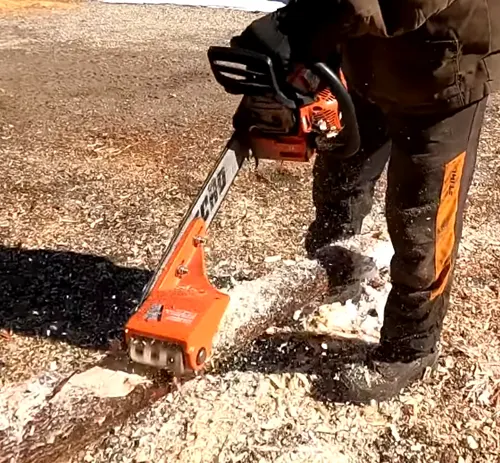
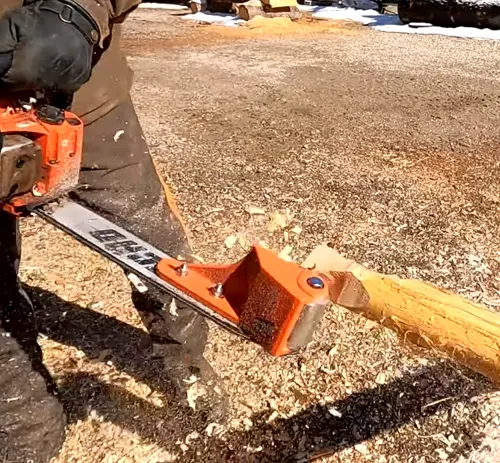
During testing, this wood debarking chainsaw attachment performed exceptionally on various wood types. On softer woods like cedar and poplar, it peeled bark with almost no resistance, giving a smooth, clean finish. For tougher woods like maple and white ash, it took a bit more time but still managed to strip bark cleanly. It’s best paired with a chainsaw around 65 cc for optimal performance, especially for tougher wood. My smaller 52 cc chainsaw managed, but efficiency dropped slightly on harder wood. If you have larger jobs, a more powerful saw will make the process faster and smoother.
How Well Does the Bozeman Chainsaw Log Peeler Perform?
Performance-wise, the Bozeman Chainsaw Debarking Tool holds up to its reputation. Equipped with two 3 1/4 inch carbide-tipped planer blades, this timber peeling tool for chainsaws cuts through wood with ease. These blades are both replaceable and sharpenable, which is a big plus for long-term use and cost-effectiveness.
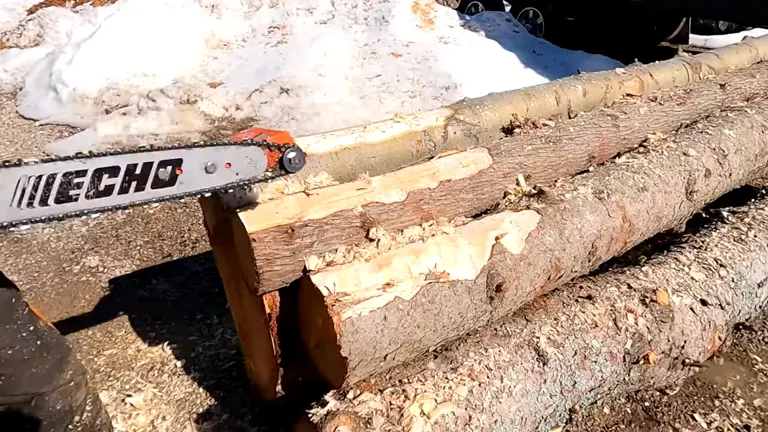
The roller drum operates smoothly, keeping the log stable as I peeled it. This design feature adds extra control that you don’t often get with other chainsaw log stripping tools. The blades stayed sharp throughout my testing, even after tackling several logs, and are user-friendly for replacement, so you won’t face any downtime when they need a refresh.
Tips for Using the Bozeman Chainsaw Log Peeler
One thing I realized quickly: the tool’s performance depends heavily on your chainsaw’s power. For most woods, especially hardwoods, a 65 cc saw or higher is ideal. Using a smaller chainsaw, like my 52 cc model, required more patience and a slower approach. I’d recommend trying this chainsaw attachment for debarking on softwoods first to get comfortable with it, especially if you’re new to chainsaw accessories. The tool’s aggressive cutting action has a slight learning curve, so easing into it will help you get a feel for how it handles.
Another tip: keep an eye on chain tension and make sure the sprocket aligns properly. The universal spline system is convenient, but double-check that everything’s fitted snugly before you start.
For safety, make sure to wear protective gear, as this debarker chainsaw accessory produces a lot of wood chips. Goggles and gloves are essential, and focus is key, especially for newer users. The Bozeman chainsaw debarking kit feels stable and safe with proper setup, even when working with harder woods.
Bozeman Chainsaw Log Peeler Pros and Cons
Pros
- The Log Peeler attachment transforms a standard chainsaw into a multifunctional tool, significantly increasing efficiency in peeling logs and preparing wood for various projects.
- Constructed from lightweight cast aluminum and protected with a durable powder-coated paint, the Log Peeler is built to withstand rigorous use and the harsh conditions of woodworking environments.
- The tool isn’t limited to just debarking; it’s versatile enough to grind down knots, sharpen poles, and cut grooves or channels in logs, making it a multifaceted tool for a wide range of woodworking tasks.
- With a universal sprocket system accommodating various chain sizes and the ability to fit on different chainsaw models, the Log Peeler offers broad compatibility, enhancing its appeal to a wide user base.
- The replaceable tungsten carbide blades are not only durable but can also be easily sharpened or replaced, ensuring the tool remains in top condition with minimal downtime.
Cons
- While the tool is designed for use with a 65 cc saw, it can be operated with a 52 cc saw like the Echo. However, this might lead to underperformance, especially in more demanding tasks, requiring users to work more slowly and carefully.
- The aggressive nature of the blades and the operational technique required might present a learning curve for new users, especially when striving for a smoother finish or tackling different types of wood.
- As with any chainsaw attachment, there’s an inherent risk factor. Users must be vigilant about safety, ensuring the tool is correctly installed, the area is secure, and all safety gear is worn, which might be daunting for some.
- The installation process, while straightforward, does require some time and attention to detail, especially when aligning the attachment, adjusting the chain tension, and ensuring all parts are securely fitted.
- The overall effectiveness of the Log Peeler is partly dependent on the power and condition of the chainsaw it’s attached to. Users with older or less powerful chainsaws might not experience the full potential of the Log Peeler.
Installing the Chainsaw Log Peeler/Log Debarker
If you’re tackling projects involving wood and logs, the Chainsaw Log Peeler, or Log Debarker, is an essential tool to consider. It’s not just a simple attachment; it’s a transformative addition to your chainsaw, enabling you to peel logs effortlessly and prepare them for your projects. Let’s dive into the details of installing and operating this innovative tool.
What You Need
- A compatible chainsaw (Ideally 65 cc, although a 52 cc like the Echo can suffice)
- The Log Peeler/Log Debarker attachment
- A longer chain (e.g., an 18-inch chain for a 16-inch bar)
- Safety equipment: protective gloves, safety glasses, etc.
- Necessary tools for installation (as specified by the manufacturer, often Allen wrenches)
Installation Steps
Preparation
- Ensure your workspace is clean, well-lit, and stable.
- Your chainsaw should be off with the spark plug disconnected to prevent accidental start-ups.
- Put on your safety equipment – better safe than sorry!
Remove the Existing Chainsaw Bar and Chain
- Carefully remove the current bar and chain from your chainsaw, following the manufacturer’s instructions.
Attaching the Log Peeler
- Align the Log Peeler attachment with the chainsaw where the bar used to be.
- The body of the Log Peeler is made of lightweight cast aluminum, typically powder-coated for durability.
- Secure the attachment using the provided fixtures. It should attach to where the bar was, extending your existing chain to accommodate the new length.
Chain and Sprocket Adjustments
- Fit the new, longer chain onto your chainsaw, ensuring it meshes well with the Log Peeler’s sprocket.
- The Log Peeler comes with a universal sprocket system, usually accommodating a 325 or 3/8 sprocket, allowing flexibility depending on your chainsaw model.
Roller Drum and Blades
- The Log Peeler has a roller drum roller to guide the log peeling process, held in place by three bolts.
- Check the two replaceable tungsten carbide blades. They should be sharp and secure. These can be sharpened or replaced as needed, ensuring long-lasting performance.
Final Checks and Safety Measures
- Double-check all connections and fittings. The Log Peeler should be securely attached, and the chain should have appropriate tension, not too tight or too loose.
- Ensure the safety brake is engaged before starting the chainsaw.
Maintaining the Bozeman Chainsaw Log Peeler
The Bozeman Chainsaw Wood Debarker scores high on durability. The cast aluminum body and powder-coated finish make it resistant to wear and tear, even in tough outdoor conditions. After several uses, I didn’t notice any signs of degradation in the finish or materials. The blades require occasional sharpening, especially with harder woods, but the ability to replace the blades is a significant plus.
Maintenance is simple just a quick brush to remove wood dust and sap after each use, and it’s ready to go. I appreciated that it didn’t require any special care or storage conditions. For those who use a portable chainsaw log peeler regularly, this low-maintenance approach is a big benefit.
Is the Bozeman Chainsaw Log Peeler Worth the Price?
At $129.99, the Bozeman Log Wizard Debarker offers solid value. Considering its versatility, durability, and overall performance, the price feels reasonable. Compared to other high-quality debarking tools for timber processing, it’s competitively priced without sacrificing quality. The ability to replace the blades rather than buying an entirely new tool also adds to its cost-effectiveness.
Should You Buy the Bozeman Chainsaw Log Peeler?
Overall, the Bozeman Chainsaw Log Peeler is an excellent tool for anyone serious about woodworking or log preparation. Its versatility, ease of use, and solid construction make it a reliable addition to any toolkit. From peeling bark to cutting channels, it transforms your chainsaw into a multifunctional tool that can handle a wide range of tasks.
If you’re looking for a way to make log prep easier and more efficient, the Bozeman chainsaw attachment for bark removal delivers on its promises. While it’s best paired with a powerful chainsaw, even a smaller model can handle light to moderate jobs with this attachment. The learning curve is there, but the results are worth it once you’re up and running. For the price and durability, this tool is a worthwhile investment for both professional woodworkers and DIY enthusiasts.
FAQs
- Can the Chainsaw Log Peeler/Log Debarker be used on any type of wood?
Yes, the Log Peeler can be used on various types of wood, including both softwoods and hardwoods. However, the efficiency and ease of peeling may vary depending on the wood’s hardness and bark texture. - Is it necessary to have prior experience with chainsaws to use this attachment effectively?
While prior experience with chainsaws is beneficial, it’s not strictly necessary. The Log Peeler is designed for straightforward operation. However, beginners should ensure they understand both the chainsaw’s and the attachment’s operation manuals and adhere strictly to safety guidelines. - How often do the tungsten carbide blades need to be replaced or sharpened?
The lifespan of the blades depends on usage frequency and the type of wood you’re working with. Regularly inspect the blades for wear and sharpness. While tungsten carbide blades are known for their durability, sharpening or replacing them as needed will ensure consistent performance. - Can the Chainsaw Log Peeler/Log Debarker be used for commercial purposes, or is it only suitable for home use?
The Chainsaw Log Peeler/Log Debarker is versatile enough to be used for both home projects and commercial purposes. Its robust construction and efficiency make it suitable for frequent, professional use, as well as occasional, home-based projects. - What safety equipment is recommended when using the Chainsaw Log Peeler/Log Debarker?
It is recommended to wear safety goggles, gloves, ear protection, and sturdy work boots when using the Chainsaw Log Peeler. Ensuring that you’re well-protected reduces the risk of injury from flying debris or accidental slips. - How does the weight of the Chainsaw Log Peeler/Log Debarker affect the handling of the chainsaw?
The Chainsaw Log Peeler is designed with lightweight cast aluminum, minimizing the addition of weight and balancing the chainsaw’s handling. Users should still exercise control and take breaks as needed, especially during extended periods of use. - Can the Chainsaw Log Peeler/Log Debarker be used in wet conditions or on damp wood?
While the Chainsaw Log Peeler can technically be used on damp wood, it’s advisable to use it in dry conditions for optimal performance and safety. Wet conditions can make handling the chainsaw more challenging and may affect the tool’s efficiency and the longevity of its components. - What is the procedure for adjusting the depth of the peel or the thickness of the bark removed?
The depth of the peel can usually be adjusted by changing the pressure you apply and the angle at which you hold the chainsaw with the Log Peeler attached. It’s recommended to start with a shallow peel and gradually adjust as you become more accustomed to the tool’s operation.
Join the discussion below by sharing your experiences, tips, or reviews. Your contributions help others make informed decisions and navigate their chainsaw choices with confidence. Let’s build a community of shared knowledge for all wood-cutting enthusiasts!

David Murray
Forestry AuthorI'm David Murry, a forestry equipment specialist with a focus on chainsaw operation. With over 13 years of experience, I've honed my skills in operating and maintaining a wide range of machinery, from chainsaws to log splitters. My passion for the outdoors and commitment to sustainable forestry drive my work, which emphasizes safety, efficiency, and staying updated with industry advancements. Additionally, I'm dedicated to sharing my expertise and promoting environmental awareness within the forestry community.
2 comments
What a great review! It was really helpful in deciding whether to move forward with purchasing one of these log peelers. Thanks you!

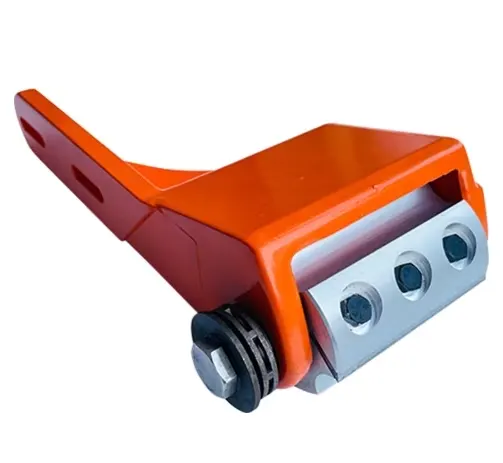

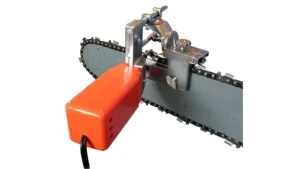
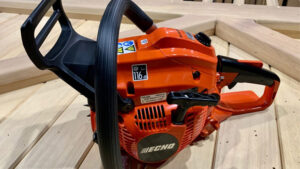
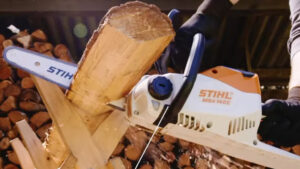
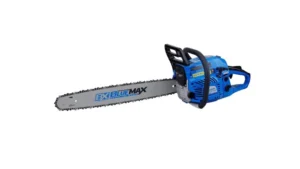


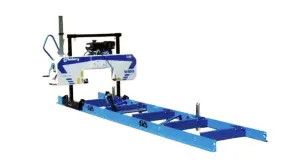
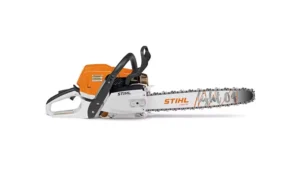
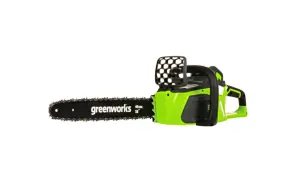
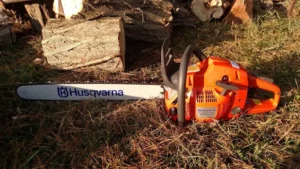

Works great for grinding down those stubborn tree roots sticking up in your lawn that the mower hits
David Switzer
May 5, 2024 2:55 pm